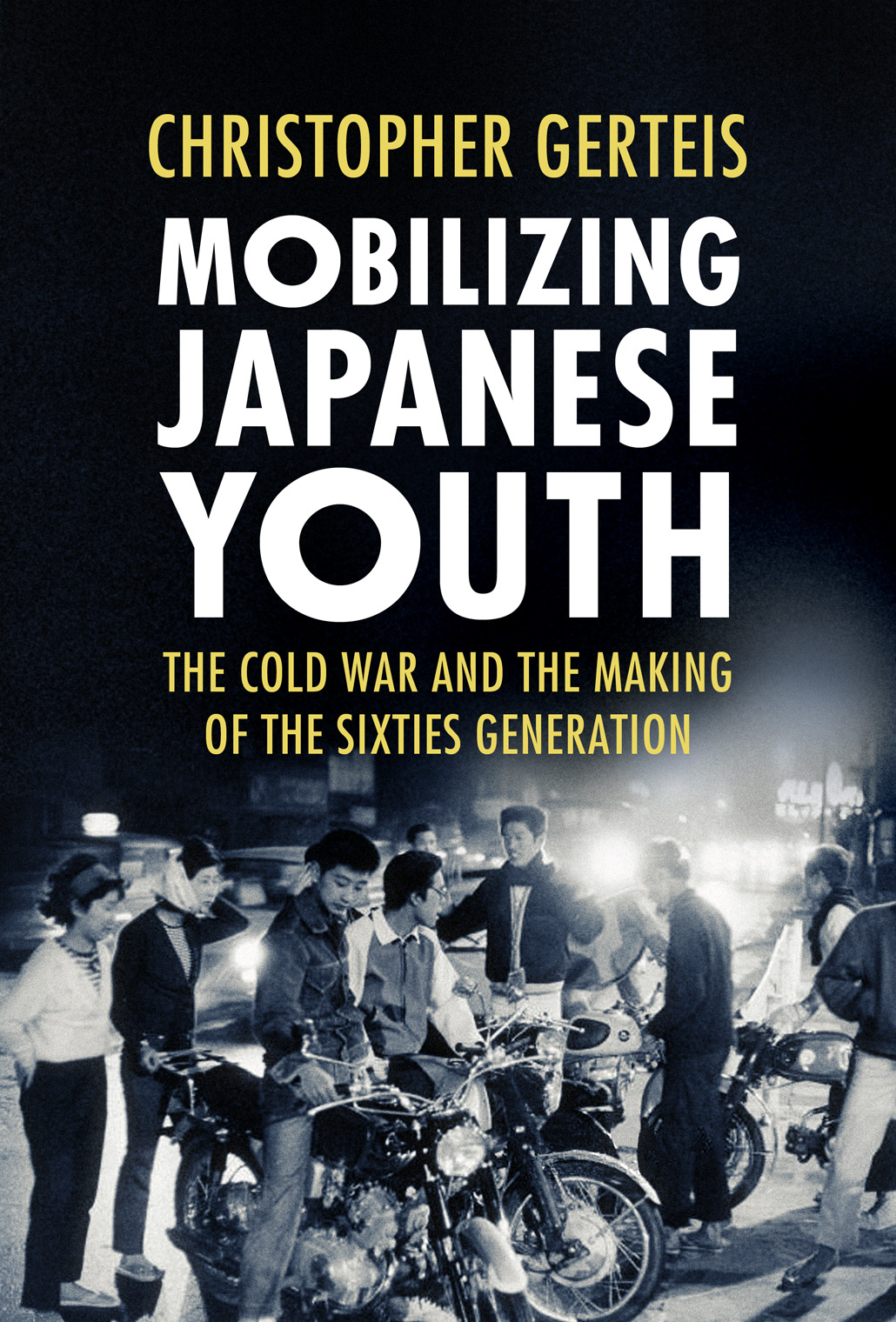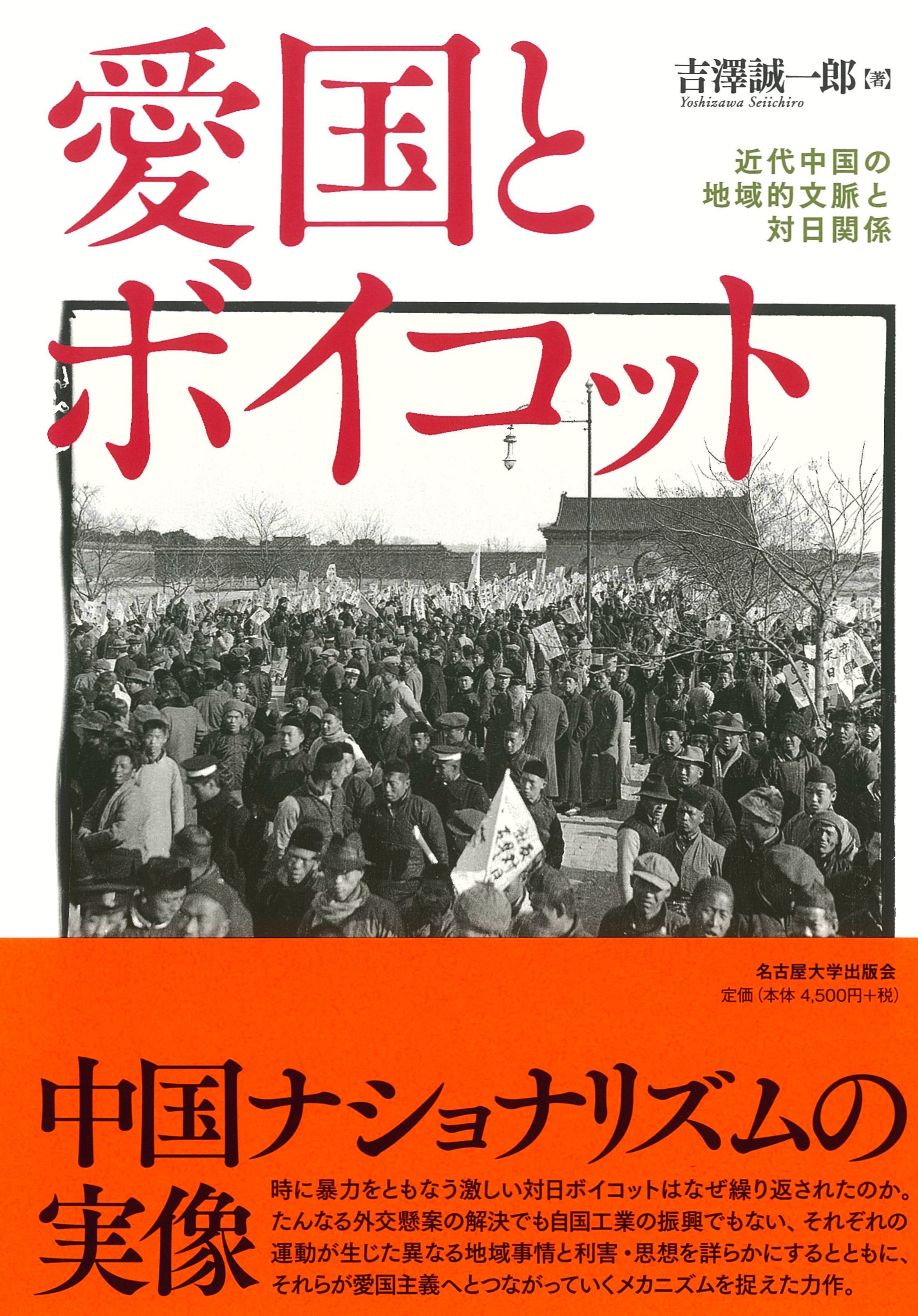
書籍名
Studies of the Weatherhead East Asian Institute, Columbia University Mobilizing Japanese Youth (日本の青少年の動員) The Cold War and the Making of the Sixties Generation (冷戦および60年代世代の特質)
判型など
192ページ、ハードカバー
言語
英語
発行年月日
2021年7月15日
ISBN コード
9781501756313
出版社
Cornell University Press
出版社URL
学内図書館貸出状況(OPAC)
英語版ページ指定
「Mobilizing Japanese Youth」の中で、 クルストファー・ガータイスは日本の非政府団体 (左翼過激派および右翼活動家) が1960年代の後半までに選挙権を持つ成人人口の過半数を占めるにいたった、戦後最初の世代の政治的意識を型にはめようとする試みについて検証している。ガータイスは、社会的に構築された階級および性別の側面が、戦後、極右および極左の両者が動員のために展開した政治的修辞および社会的組織の形態に事前に組み込まれ、1970年代になってからも、肉体労働やサービス産業に従事する若い男女労働者が表明し、その時代の注目を集めた日本人の若者による暴力的な政治活動によって説明された社会的および政治的疎外感のレベルをさらに悪化させたと述べている。
ガータイスは非政府団体の指導者たちがどのようにして若者の政治的意識に影響を与えたかに焦点を当てている。本書はこれらの団体によって性別、世代、および階級に注意して作成されたプロパガンダに焦点を当てた革新的なものとなっている。ガータイスは社会史家や文化史家の手法を用いて、日本放送協会 (NHK) のアンケート調査から、一見無害な子供向け漫画、ピンク・エクスプロイテーション映画までありとあらゆるすべてに関する興味深い資料を利用している。そこから浮かび上がるのは性別や階級の規範に異を唱える代わりにかえって強化し、動員を試みた若者たちを究極的には疎外する結果となった、極左と極右の戦争にまたがる世代の指導者たちの肖像である。さらに、60年代世代について提供された洞察は、今日の抗議政治の理解に驚くほど関連している。
ガータイスが示すように、日本の若者たちは、汎アジア主義、毛沢東主義、ブラックナショナリズム、反帝国主義、反共産主義、ネオファシズム、および超国家主義の独特な歴史的合致から構成される思想および人々の、国家を超えた流れに臆することなく影響を受けた。「Mobilizing Japanese Youth」 は、支配的な文化およびそれを巻き込む日本国家の権力に対する原体験および社会的、文化的、政治的挑戦について慎重に分析している。組織労働者によって編成された1950年代形式の大衆動員努力はより過激な思想であれば可能であったかもしれないが、政治的想像力を獲得することはできなかった。極右組織と極左組織がどのようにして若い過激派、特に労働者階級の過激派に働きかけようとしたかに焦点を当てることにより、本書は1960年以降の若者の過激主義の連続する波への新しい理解を提供している。
60年世代は同世代の若者の職業人生および政治的可能性を抑制してきたというガータイスの議論は、その適用性に関して構造上の制約を超え、現在のよりきめ細やかなレベルでの動員の困難さを説明している。雇用不安に対する大いなる注目にもかかわらず、2000年代のフリーターや他の非正規労働者を動員する組合の努力はほとんど失敗に終わった。限定的な成功にもかかわらず、組合の政治、修辞、および戦略はほとんどの若い非正規労働者たちを疎外し、新しい世代を労働運動へと引き込む機会を無駄にした。アート、音楽、ダンスなどを使用した2000年代に出現したプロテストの形態により、60年代世代に関連づけられている街頭抗議のネガティブで暴力的な連想を和らげる試みがなされた。このような戦術は、60年代世代の抗議運動における暴力に繋がる非難の対象となった男性的な対立デモに対抗して女性的であると説明されることもあった。しかし、このように多様性のある群衆を引き付けることを目的としたより遊び心のある形態の抗議運動は、しばしば馬鹿にされ、無駄であると退けられた。1970年代以降、青少年の抗議運動として最も公に知られている自由と民主主義のための学生緊急行動 (SEALDs) は、タカ派の日本国憲法改定論者から日本の憲法を守るという立場を取る普通の学生として自らを位置付けしようとしたが、彼らは極左からも極右からもブルジョワで未熟で浮世離れしていると容赦ない攻撃を受けた。極右は特に、SEALDsの女性メンバーに対するオンライン上のハラスメントにおいて極端なまでの女性蔑視を明らかにした。これらの数少ない例は、現代の日本における性別、階級、および世代が、若者の動員努力を今でも過去とあまり変わらない方法で混乱させていることを示している。
(紹介文執筆者: 東洋文化研究所 准教授 クルストファー・ガータイス、ロビン・オデイ (ノースジョージア大学) / 2022)
本の目次
1. Unions, Youth and the Cold War
2. The Rise and Fall of the Japanese Red Army
3. Political Alienation and the Sixties Generation
4. Cold War Warriors
5. Motorboat Gambling and Morals Education
Epilogue: Life and Democracy in Postwar Japan
関連情報
Best Book Award, SOAS University of London Research and Knowledge Exchange Prizes 2022.
著者インタビュー:
Q&A with the Author: Christopher Gerteis on Japanese Youth Radicalism
https://www.cornellpress.cornell.edu/christopher-gerteis-on-japanese-youth-radicalism/
書評:
"[Mobilizing Japanese Youth] is innovative by focusing on the propaganda produced by these groups with attention to gender, generation, and class. Using the tools of social and cultural historians, Gerteis draws from a fascinating set of materials ranging from Japan Broadcasting Corporation surveys through seemingly benign children's cartoons to pink exploitation films and everything in between." (Pacific Affairs)
"In Mobilizing Japanese Youth, Christopher Gerteis makes use of various approaches to capture the character of the cultural moment before and after the Asama sanso siege. Gerteis is a seasoned researcher in the history of organized labour in Japan, and in this work he focuses his attention not on what Schieder calls 'the campus-based New Left' but on the decisions and practices of blue and pink-collar workers." (History Workshop Journal)
"[T]he discussion is far-ranging and Gerteis includes diverse sources as well: from activist magazines to punk music lyrics and manga, which give a sense of the wide array of media in which generational identity and mission was defined and expressed." (Japan Forum)
"Christopher Gerteis's Mobilizing Japanese Youth is a timely and informative contribution to the scholarship on youth political mobilization that sheds new light on the topic through its atten- tion to the nexus of gender, class, and generation. Overall, [the book] is a valuable contribution to our understanding of youth mobilization in Cold War-period Japan." (Journal of Family History)
"Christopher Gerteis works with a fascinating range of sources, from labor union publications to agitprop and pink movies, punk music, raunchy sports newspapers, children's cartoons, NHK surveys, and CIA documents to provide a rich image of social ferment at the alienated fringes and in the mainstream of Japanese society during the turbulent 1950s–60s and since." (David Ambaras, North Carolina State University, Raleigh, author of Bad Youth)
"In this useful addition to our understanding of the global 1960s, Gerteis follows attempts on the left and right to mobilize the '60s generation. The work is informed by class and gender perspectives often obscured and offers an alternate view to the typical image of cooptation and political apathy." (Wesley Sasaki-Uemura, University of Utah, author of Organizing the Spontaneous)



 書籍検索
書籍検索


